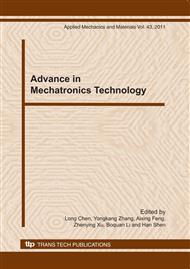p.610
p.614
p.619
p.624
p.628
p.633
p.637
p.641
p.647
Crack-Propagating Direction of Tire Bead Rubber Determined by Jmax Criterion
Abstract:
Three-dimensional crack propagating path of tire bead rubber was the premise to study the crack propagation direction of bead. For this reason, Jmax Criterion was put forward. Utilized J integral maximum (Jmax) to determine the crack propagation direction of rubber. Calculated J-integral values of different preset directions by Abaqus built-in algorithm, obtained J (θ) curve which showed the Jmax and direction angle (θ) by fitting simulation data. Using Abaqus to set up two different crack model of bead rubber and simulate the crack propagation path, the results was consistent with the real crack propagation direction of specimen test, validated the applicability of Jmax Criterion..
Info:
Periodical:
Pages:
628-632
Citation:
Online since:
December 2010
Authors:
Keywords:
Price:
Сopyright:
© 2011 Trans Tech Publications Ltd. All Rights Reserved
Share:
Citation:


